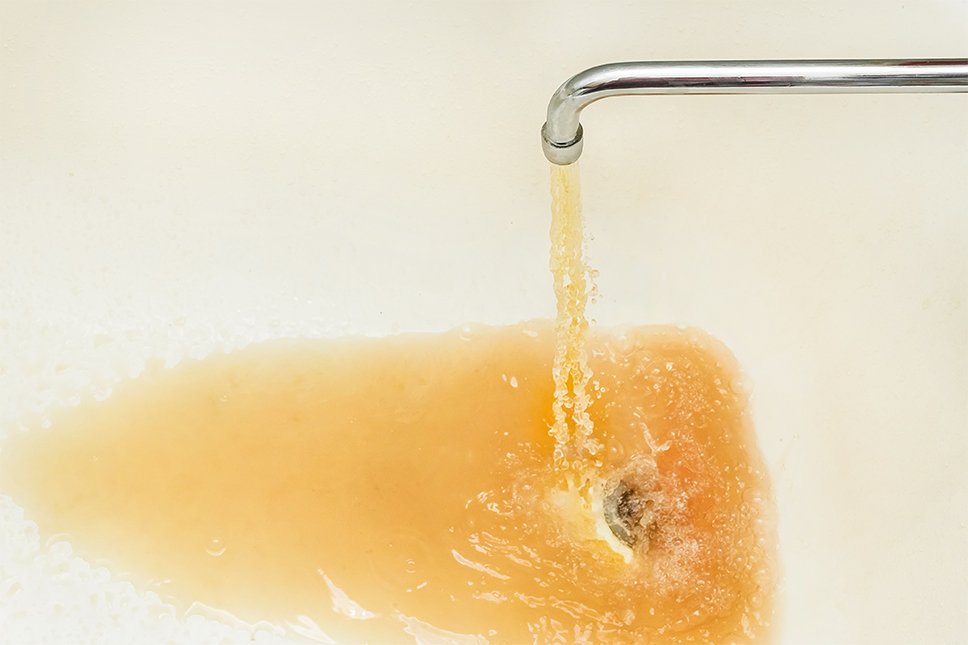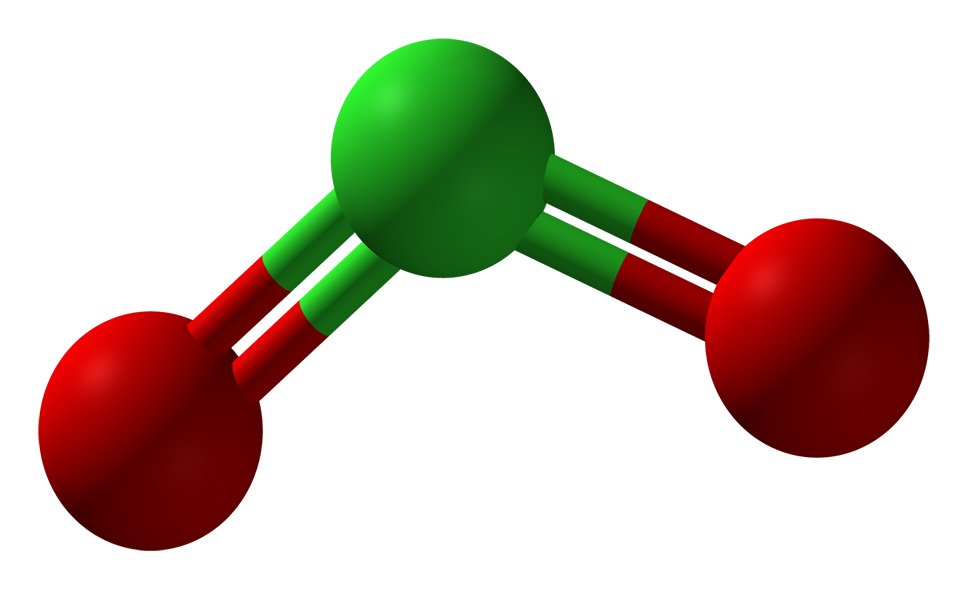Trihalomethane, mainly chloroform, was detected in tap water in Holland (ROOK) and America (BELLER) in 1974.
So far, 2221 kinds of organics harmful to human health have been detected in water sources, while 765 kinds are found in drinking water, including 20 carcinogens, 23 suspected carcinogens, 18 cancer-promoting substances, and 56 mutagenic substances.
Not only cause cancer, but these substances can also cause people’s liver poisoning, nerve poisoning, metabolic disorders, and other hazards.

Therefore, we all attach great importance to the selection of environmentally friendly, safe, and efficient disinfectants to treat drinking water and ensure the safety of drinking water.
At present, there are chlorine gas, bleaching powder, sodium hypochlorite, chloramine, chlorine dioxide, ozone, and ultraviolet disinfection modes for water disinfection, each of which has different properties and characteristics.
Among them chlorine disinfection effect is good, and the cost is lower than other disinfection methods.
Since the beginning of the last century, it has become the dominant disinfectant for water disinfection. It is convenient to use and add, and it is also the only disinfectant that can completely remove ammonia by oxidation.
However, due to the increase of various organic matter content in underground water quality in recent years, the interaction of organic matter and chlorine in the water will produce trihalomethane and other mutagenic and carcinogenic organic compounds and cause serious environmental problems, so the World Water Quality Association, the World Health Organization has not recommended the use of chlorine agent in drinking water disinfection.

There is also bleaching powder, and sodium hypochlorite disinfection, because bleaching powder, and sodium hypochlorite easy to be affected by the sun, temperature, and decomposition, containing effective chlorine volatile, therefore, the storage conditions and effective chlorine testing requirements are relatively high. The use of chloramine disinfection requires a longer contact time, the operation is more complex, and chloramine germicidal effect is poor, should not be used as a drinking water disinfectant alone.
The sterilization effect of ultraviolet light is only effective during its irradiation, so the treated water does not have residual disinfection ability once it leaves the sterilizer. If a bacterium is not inactivated and enters the subsequent system, it will stick to the downstream pipeline surface and reproduce, which is easy causes secondary pollution.
So in general, the most ideal way to disinfect drinking water at present is chlorine dioxide and ozone disinfection.

Chlorine Dioxide
Chlorine dioxide was introduced in 1911.
It was not used for sterilization until around 1940 when sodium hypochlorite was produced on a large scale.
In 1940, the Niagara Falls plant in the United States took the lead in using it to treat drinking water and achieved good results. Now it has been widely used in developed countries in the world, and its application scope is wider and wider.
The United States Department of Agriculture (EPV) and environmental Protection Agency (EPA) 1985 confirmed it as a food disinfectant and environmental protection water treatment agent, food and Drug Administration (FDA) approved it as a food additive.
Japan, Australia, and western European countries have legislated it as the fourth generation of safe disinfectants and food additives to replace chlorine disinfectants.
In view of its excellent characteristics, the World Health Organization (WHO) confirmed that chlorine dioxide is a grade A1 safe disinfectant, and is vigorously promoted around the world.

Disinfection Principle Of Chlorine Dioxide
In the presence of water, Chlorine dioxide can attach to the cell walls of viruses, bacteria, and microbes, penetrate the cell walls and enter the cells, direct oxidation of sulfur-containing alanine, tryptophan, and tyrosine in cells to destroy bacteria. Microbial protein synthesis is also controlled by Chlorine dioxide and thus has a significant fungicidal effect.
Processing Method Of Chlorine Dioxide
Because chlorine dioxide aqueous solution is volatile and sensitive to pressure, temperature and light, it cannot be compressed for liquefaction storage and transportation, but can only be prepared on-site when in use and used immediately.
The preparation methods of chlorine dioxide include an electrolytic salt method, chemical reaction method, and ion exchange method.
The electrolysis method and chemical method are widely used in production.

Advantages Of Chlorine Dioxide in Drinking Water Treatment
- It can directly oxidize humic acid (HA) or fulvic acid (FA) and other natural organic matter in water, without forming trihalomethane with it, and greatly reduce the by-products of chlorine disinfection such as trihalomethane (THMs) in water after disinfection.
- There is no hydrolysis in water and no reaction with ammonia or nitrogen in the water. Therefore, its bactericidal efficiency is not affected by PH value and ammonia nitrogen concentration in water.
- It can effectively remove harmful substances such as algae, phenols, and sulfide in water, and effectively remove iron and manganese. It has a better removal effect than chlorine on the color, smell, and taste of water caused by these substances.
- It can effectively kill the water-borne pathogenic microorganisms with poor disinfection effect by chlorine in water, such as viruses, bacterial spores, heterotrophic bacteria, sulfate-reducing bacteria, and fungi in the water distribution network.
- Compared with ozone, the effect lasts longer.

Application Status Of Chlorine Dioxide
In recent years, the study and application of CIO2 are increasing in foreign countries when they seek new disinfectants to avoid the harmful effects caused by chlorine disinfection. Because CIO2 does not react with organic matter to form chloroform, it is more and more widely used in drinking water treatment. The safety of chlorine dioxide disinfection has been classified as A1 level by the World Health Organization (WHO) and is identified as the most ideal replacement product for chlorine disinfectant.
Chlorine dioxide is now used in thousands of water plants in the United States and Europe.
Ozone
Ozone is an allotrope of oxygen and has a fishy smell. Gas is light blue, liquid is blue.
In nature, ozone exists in the atmosphere, in the atmosphere near the ground is very little, and the concentration of ozone in the sea is higher than that on land.
Ozone can be prepared in the laboratory and produced in the industry using ozone generators.
Ozone is used in water disinfection and air disinfection. When the residual concentration of ozone in water is 0.05mg/L, it can meet the sterilization requirements.

Disinfection Principle Of Ozone
After the ozone REDOX reaction in water, monatomic oxygen (O) and hydroxyl (OH) with strong oxidation capacity are produced to decompose organic matter, bacteria, and microorganisms in water instantly. Hydroxyl (OH) is a strong oxidant and catalyst, which can cause a chain reaction of organic compounds, and the reaction is very rapid. Hydroxyl (OH) has a strong killing effect on various pathogenic microorganisms. Monatomic oxygen (O) also has a strong oxidation capacity and has a strong lethality to stubborn microorganisms such as viruses and buds.
Processing Method Of Ozone
Since O3 will slowly decompose into O2 in the air, it is not easy to store, so O3 should be produced locally as required. At present, ozone production methods include the air discharge method, electrolysis method, ultraviolet radiation method, and radiochemical method, among which air discharge method and electrolysis method are more commonly used.

Advantages Of Ozone in Drinking Water Treatment
- Ozone has a stronger oxidation disinfection ability than the chlorine disinfection method, not only can be more thorough sterilization but also can degrade the harmful components contained in water and remove heavy metal ions and a variety of organic impurities, such as iron, manganese, sulfide, benzene, aldehyde, organophosphorus, organochlorine, cyanide, greatly improve water quality.
- It has the function of removing color and deodorizing, and can reduce the turbidity of water.
- Ozone has strong adaptability and is less affected by water temperature and PH value.
- Ozone to adapt to a wide range, not limited by bacteria, sterilization effect than chlorine disinfection and ultraviolet disinfection effect.
- Unlike chlorine, residual ozone can decompose into oxygen without secondary pollution. The water treated by ozone is colorless and odorless, has a good taste, and can improve the quality of drinking water.
Therefore, to improve the quality and shelf life of bottled drinking water, the International Bottled Water Association (IBWA) recommends ozone treatment. Before ozone treatment, bottled water generally uses reverse osmosis, nanofiltration, and ultrafiltration to remove 99% of the organic matter in natural water and reduce the amount of ozone.
Status Of Ozone Application
At present, ozone has been used as a major means of deep purification of drinking water in major European cities. In China, ozone disinfection is generally in the initial stage, especially in the water treatment process, but in regional water supply projects, ozone disinfection has been applied to a certain extent, and some experience has been accumulated.




